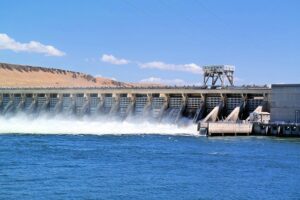 According to the researchers, the distributed sensing market is predicted to reach more than $891 million by 2026. The distributed temperature sensing power cables and distributed acoustic sensing systems, as well as global environmental changes, are expected to increase the demand significantly. The modern advancements and developments connected with the light-sized fiber optic systems stimulate globally the distributed sensing market. Moreover, the growth of the distributed sensing market can also be explained by the government’s support for distributed temperature sensing technology.
According to the researchers, the distributed sensing market is predicted to reach more than $891 million by 2026. The distributed temperature sensing power cables and distributed acoustic sensing systems, as well as global environmental changes, are expected to increase the demand significantly. The modern advancements and developments connected with the light-sized fiber optic systems stimulate globally the distributed sensing market. Moreover, the growth of the distributed sensing market can also be explained by the government’s support for distributed temperature sensing technology.
Nowadays, there are many appliances of distributed sensing systems. There is an extensive need for monitoring continuous temperature changes within big territories and long distances, for example, in the oil sphere. The distributed temperature sensing systems are also applied in subsea areas. Distributed sensing can also help in providing security and productivity in different market sectors in the upcoming years. Moreover, fiber optic solutions are more often applied in fire detection processes.
In April the newly developed fiber optic system got a reward for the innovative approach and commercialization. The fiber optic system expands the coverage of distributed sensors. As a result, this innovation gives new possibilities in many fields such as energy, infrastructure, and environmental sectors. This fiber optic technology allows the collection of more precise data. That could lead to the improvement of sustainability, enhancing operational safety, and getting optimal costs for existing and new applications.
Distributed fiber optic sensors offer sensitivity 100 times greater than the usual ones. The higher sensitivity solves the emerging critical problem and challenges fast. That allows monitoring the situation continuously. This fiber optic technology also provides all the advantages such as carbon capture, improved geothermal systems, and dam integrity monitoring as well as subsea oil and gas wells.
In conclusion, distributed sensing systems are a very promising technology for many sectors. Thanks to the distributed sensors that are extremely sensitive to any slight changes, they can provide the most precise picture in comparison with other modern technologies.
Optromix is a fast-growing vendor of fiber Bragg grating (FBG) product line such as fiber Bragg grating sensors, for example, FBG strain sensors, FBG interrogators and multiplexers, Distributed Acoustic Sensing (DAS) systems, Distributed Temperature Sensing (DTS) systems. The company creates and supplies a broad variety of fiber optic solutions for monitoring worldwide. If you are interested in structural health monitoring systems and want to learn more, please contact us at info@optromix.com


 Passive
Passive  Common communication channels apply fibers in
Common communication channels apply fibers in  Nowadays
Nowadays A novel
A novel  Dams applied for hydropower, irrigation or mining play a crucial role in human life, herewith, they evoke significant human, economic, and environmental consequences when they fail. Nevertheless,
Dams applied for hydropower, irrigation or mining play a crucial role in human life, herewith, they evoke significant human, economic, and environmental consequences when they fail. Nevertheless,